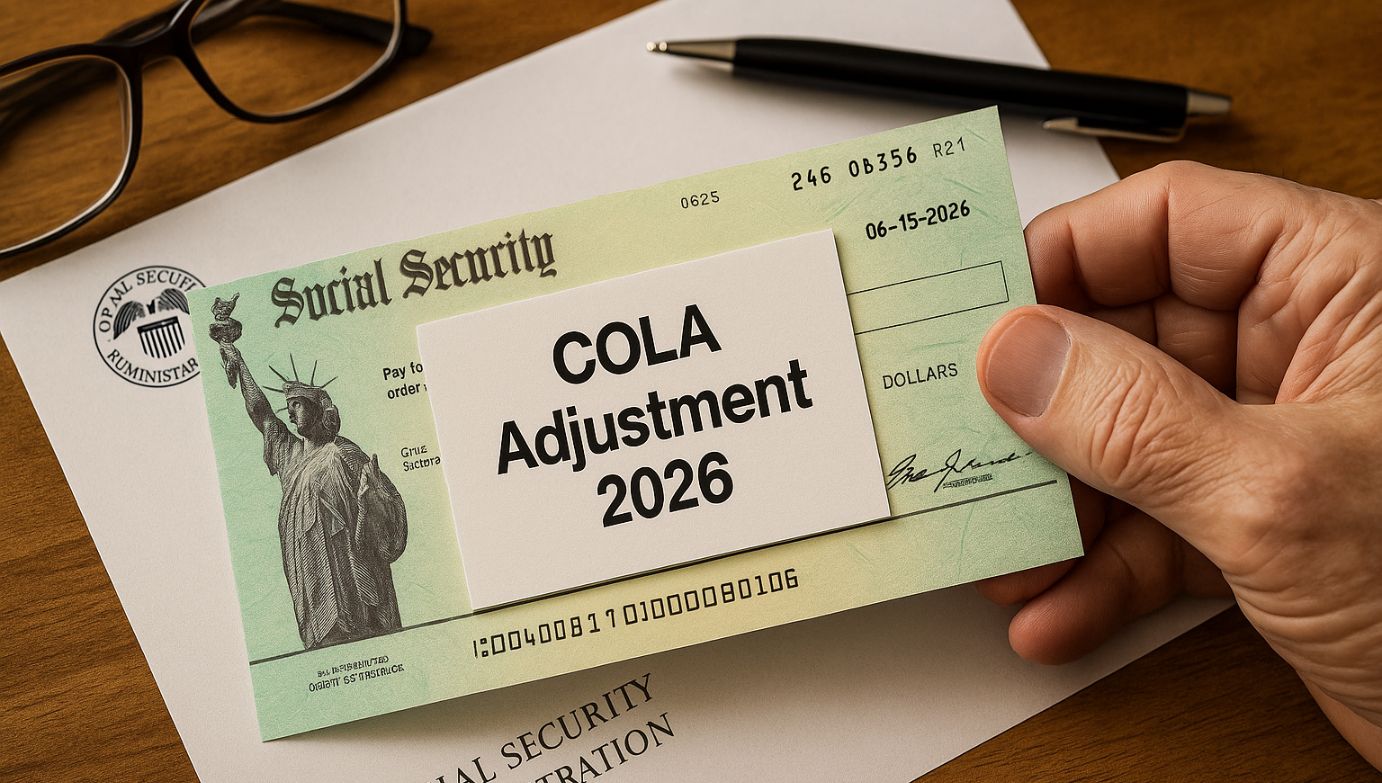The 2026 Social Security Cost-of-Living Adjustment (COLA) is projected to be 2.4%, according to May 2025 estimates from The Senior Citizens League (TSCL), the smallest boost since 2021’s 1.3% COLA adjustment. This modest boost is a far cry from 2023’s 8.7% COLA and adds to growing concerns over retirees’ ability to keep pace with inflation.
For the average Social Security recipient receiving $1,980 a month, a 2.4% COLA increase is just $47.52 more a month—a modest increase that could be entirely offset by rising medical and living expenses.
How to calculate your 2026 Social Security check increase based on your current amount
To calculate your Social Security check increase based on a Cost-of-Living Adjustment (COLA), multiply your current monthly benefit by the COLA percentage, then add that result to your original amount. For example, if your current benefit is $1,500 and the COLA is 2.4%, you would calculate 1,500 × 0.024 = 36. Add that to your original benefit to get a new monthly total of $1,536.
2026 COLA calculator
COLA Calculator
Here is a table showing examples of the increase and new total monthly payments if the COLA is 2.4%:
| Current Monthly Benefit | 2.4% Increase | New Monthly Total |
|---|---|---|
| $900 | $21.60 | $921.60 |
| $1,200 | $28.80 | $1,228.80 |
| $1,500 | $36.00 | $1,536.00 |
| $1,800 | $43.20 | $1,843.20 |
| $2,200 | $52.80 | $2,252.80 |
| $2,700 | $64.80 | $2,764.80 |
| $3,200 | $76.80 | $3,276.80 |
| $3,800 | $91.20 | $3,891.20 |
| $4,400 | $105.60 | $4,505.60 |
| $5,108 | $122.59 | $5,230.59 |
How COLA is calculated: The CPI-W formula
The Social Security Administration calculates yearly COLAs using the Consumer Price Index for Urban Wage Earners and Clerical Workers (CPI-W), measuring prices paid by families where 50% or higher of their earnings derive from clerical or wage-earning occupations.
The calculation is the difference between the average CPI-W for this year’s July, August, and September and the same months of the previous year. April to May 2025’s CPI-W 2.4% yearly 2026 inflation reading is the standard, although most recent data is from summer and early fall.
However, the CPI-W assigns just 7.3% of its weight to medical care, a consumption category that devours over 50% of many retirees’ budgets. By contrast it overweights categories such as transportation (17.8%) and clothing (3.2%), which are less relevant to older Americans.
Read more about Social Security
- Bad news for COLA in 2026 in your retirement – Here’s the Social Security check hike projections that millions of Americans won’t like
- Goodbye to living well with COLA adjustments in 2026 – Here’s how Social Security payments will affect U.S. Boomers
- A 63-year-old widow sends a desperate message with Social Security payments despite earning $56,000 a year: “It’s become a career”
- Four common mistakes that reduce your Social Security benefits drastically (and how the 2026 COLA adjustment to checks won’t fix it)
According to TSCL, this structural imbalance has curtailed purchasing power for seniors, with the group estimating a 14% loss in buying power for seniors from 2000 to 2023.
Drivers of the 2026 projection: Cooling inflation and policy shifts
Three interrelated factors drive the 2026 outlook:
- Moderation of inflation: Core inflation dropped from 9.2% in 2022 to 2.6% in 2025, easing pressure for big COLAs. That “stability” conceals seniors’ special challenges, though, as medical inflation persists at 4.1% a year.
- Tariff effects: The suggested tariffs on imported commodities can lead to higher consumer prices later in 2025, which might add to the ultimate COLA adjustment. Experts warn that a 5% tariff-driven price hike can add 0.3 percentage points to the adjustment.
- Prescription drug policies: President Trump’s May 2025 executive order aiming to lower U.S. drug prices by bringing them in line with global prices will not be reflected in CPI-W data until 2027, at a minimum, meaning 2026’s COLA is unaffected.
The retiree squeeze: COLA vs. Reality
For 73% of seniors who depend on Social Security for more than half their income, the estimated COLA promises to widen financial hardship. TSCL’s 2025 survey of 1,920 beneficiaries shows worrying trends:
- 20% spend more than $1,000 a month on healthcare, including Medicare premium payments, deductibles, and uncovered services such as dental care.
- Median rent for seniors has increased 18% since 2021, outpacing COLA adjustments by more than 6.2 percentage points.
- A $47 monthly COLA increase could be negated by a $568 annual rise in Medicare Part B premiums, anticipated to grow by 6% in 2026.
TSCL Executive Director Shannon Benton warns, “Seniors are really going nowhere as their costs suck them underwater.”
Looking Ahead: Potential Reforms
The 2026 estimate repeats a decade of below-average adjustments, with COLAs of just 2.1% per year since 2010 versus 4.3% average cost for seniors’ core expenses. Interest groups call on Congress to transition to the CPI-Elderly (CPI-E) index, which replenishes categories to more accurately reflect seniors’ spending. Initial estimates indicate a CPI-E-based 2026 COLA would be 3.1%, close to 30% more than the estimated projection.
Until systemic reforms occur, retirees have to make tough choices: 57% confess skipping prescription medication doses or doctor visits in order to be able to purchase groceries, and 33% engage in gig economy labor to supplement incomes. With October’s final COLA announcement on the horizon, the disconnect between government reports and real experience grows ever more acutely—a gap that threatens to leave millions of seniors terrifyingly adrift.
Further reading
A solution for medicare and social security – new tax plan for high earners proposed
Where can I obtain a copy of the Social Security Death Master File?

